Metodi P. Yankov
Rate Adaptive Geometric Constellation Shaping Using Autoencoders and Many-To-One Mapping
Jul 19, 2023Abstract:A many-to-one mapping geometric constellation shaping scheme is proposed with a fixed modulation format, fixed FEC engine and rate adaptation with an arbitrarily small step. An autoencoder is used to optimize the labelings and constellation points' positions.
Geometric Constellation Shaping for Fiber-Optic Channels via End-to-End Learning
Nov 08, 2022
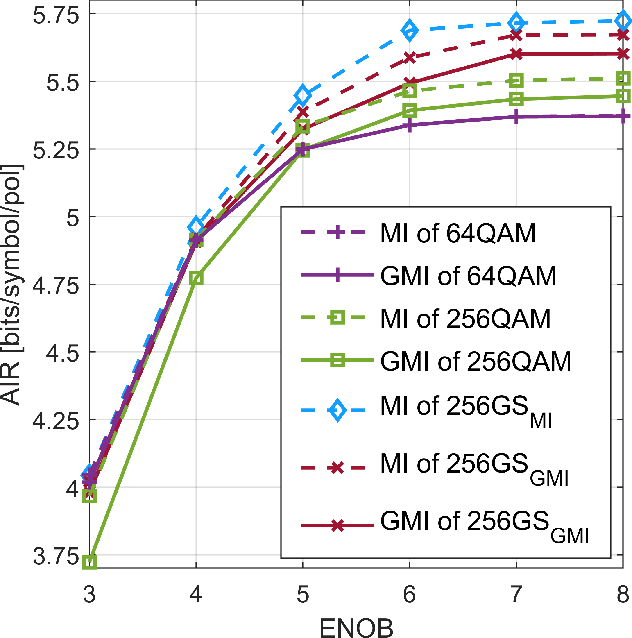


Abstract:End-to-end learning has become a popular method to optimize a constellation shape of a communication system. When the channel model is differentiable, end-to-end learning can be applied with conventional backpropagation algorithm for optimization of the shape. A variety of optimization algorithms have also been developed for end-to-end learning over a non-differentiable channel model. In this paper, we compare gradient-free optimization method based on the cubature Kalman filter, model-free optimization and backpropagation for end-to-end learning on a fiber-optic channel modeled by the split-step Fourier method. The results indicate that the gradient-free optimization algorithms provide a decent replacement to backpropagation in terms of performance at the expense of computational complexity. Furthermore, the quantization problem of finite bit resolution of the digital-to-analog and analog-to-digital converters is addressed and its impact on geometrically shaped constellations is analysed. Here, the results show that when optimizing a constellation with respect to mutual information, a minimum number of quantization levels is required to achieve shaping gain. For generalized mutual information, the gain is maintained throughout all of the considered quantization levels. Also, the results implied that the autoencoder can adapt the constellation size to the given channel conditions.
Spectral Power Profile Optimization of Field-Deployed WDM Network by Remote Link Modeling
Jul 04, 2022

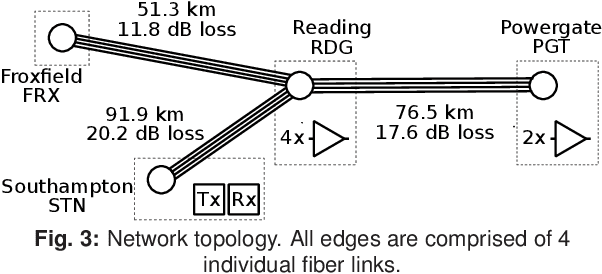

Abstract:A digital twin model of a multi-node WDM network is obtained from a single access point. The model is used to predict and optimize the transmit power profile for each link in the network and up to 2.2~dB of margin improvements are obtained w.r.t. unoptimized transmission.
Capacity and Achievable Rates of Fading Few-mode MIMO IM/DD Optical Fiber Channels
Jan 27, 2022
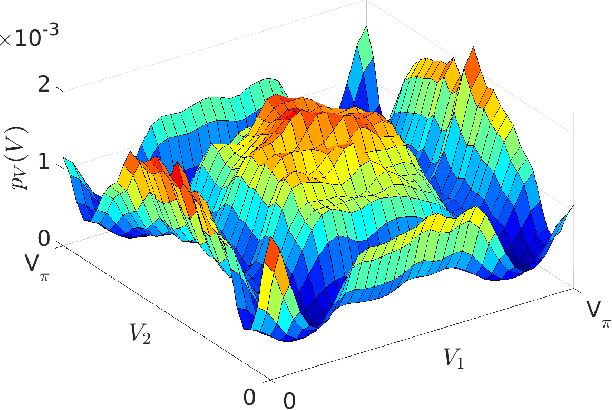

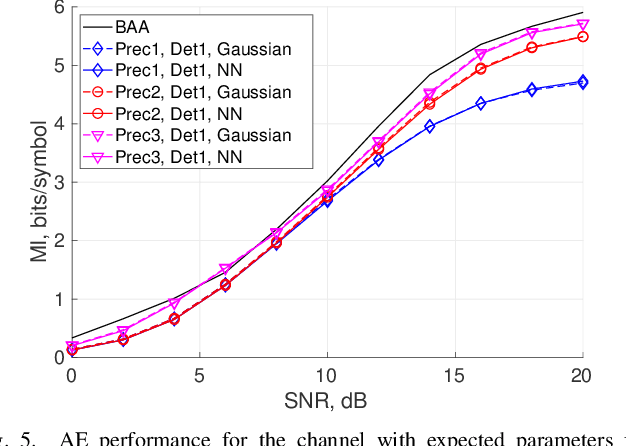
Abstract:The optical fiber multiple-input multiple-output (MIMO) channel with intensity modulation and direct detection (IM/DD) per spatial path is treated. The spatial dimensions represent the multiple modes employed for transmission and the cross-talk between them originates in the multiplexers and demultiplexers, which are polarization dependent and thus timevarying. The upper bounds from free-space IM/DD MIMO channels are adapted to the fiber case, and the constellation constrained capacity is constructively estimated using the Blahut-Arimoto algorithm. An autoencoder is then proposed to optimize a practical MIMO transmission in terms of pre-coder and detector assuming channel distribution knowledge at the transmitter. The pre-coders are shown to be robust to changes in the channel.
End-to-end Learning of a Constellation Shape Robust to Channel Condition Uncertainties
Nov 16, 2021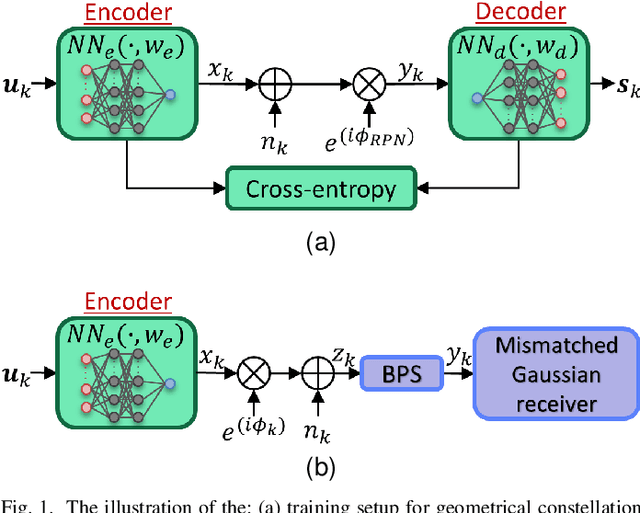
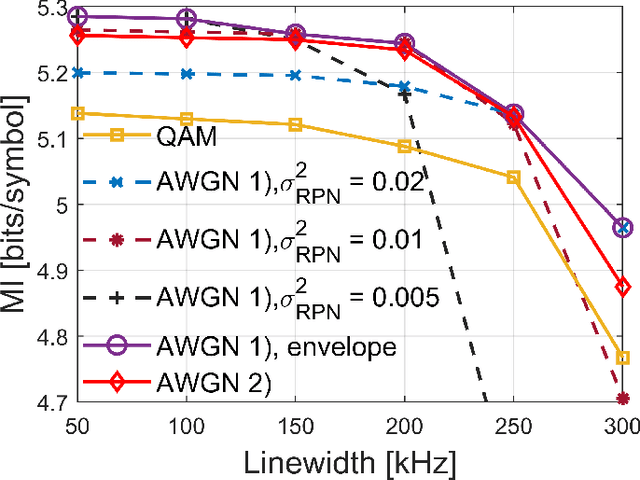

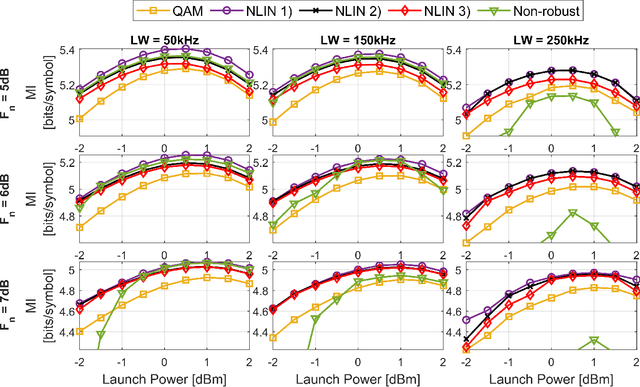
Abstract:Vendor interoperability is one of the desired future characteristics of optical networks. This means that the transmission system needs to support a variety of hardware with different components, leading to system uncertainties throughout the network. For example, uncertainties in signal-to-noise ratio and laser linewidth can negatively affect the quality of transmission within an optical network due to e.g. mis-parametrization of the transceiver signal processing parameters. In this paper, we propose to geometrically optimize a constellation shape that is robust to uncertainties in the channel conditions by utilizing end-to-end learning. In the optimization step, the channel model includes additive noise and residual phase noise. In the testing step, the channel model consists of laser phase noise, additive noise and blind phase search as the carrier phase recovery algorithm. Two noise models are considered for the additive noise: white Gaussian noise and nonlinear interference noise model for fiber communication. The latter models the behavior of an optical fiber channel more accurately because it considers the nonlinear effects of the optical fiber. For this model, the uncertainty in the signal-to-noise ratio can be divided between amplifier noise figures and launch power variations. For both noise models, our results indicate that the learned constellations are more robust to uncertainties in channel conditions compared to a standard constellation scheme such as quadrature amplitude modulation and more importantly standard geometric constellation shaping techniques.
End-to-end Learning of a Constellation Shape Robust to Variations in SNR and Laser Linewidth
Jun 01, 2021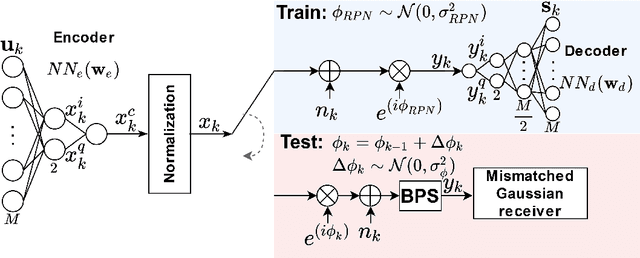
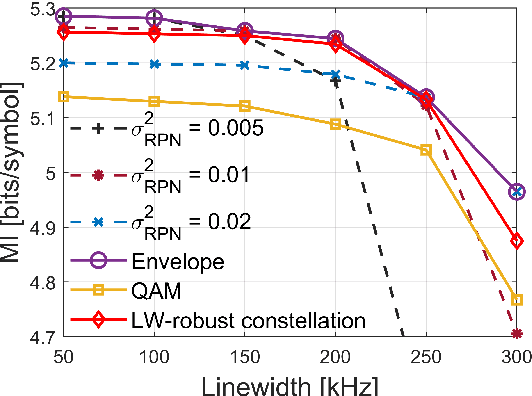
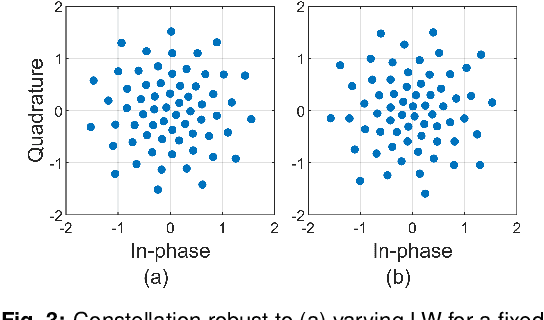
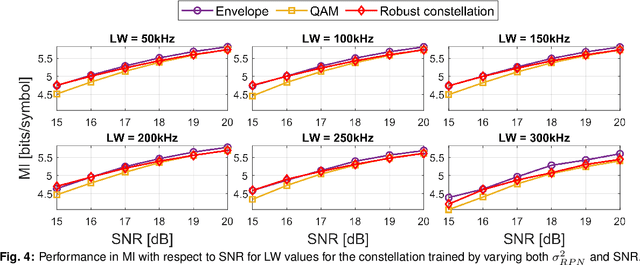
Abstract:We propose an autoencoder-based geometric shaping that learns a constellation robust to SNR and laser linewidth estimation errors. This constellation maintains shaping gain in mutual information (up to 0.3 bits/symbol) with respect to QAM over various SNR and laser linewidth values.
All-Optical Nonlinear Pre-Compensation of Long-Reach Unrepeatered Systems
Jan 06, 2021

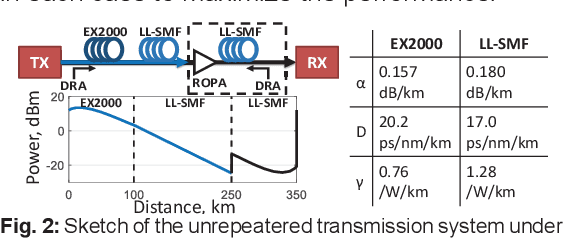

Abstract:We numerically demonstrate an all-optical nonlinearity pre-compensation module for state-of-the-art long-reach Raman-amplified unrepeatered links. The compensator design is optimized in terms of propagation symmetry to maximize the performance gains under WDM transmission, achieving 4.0dB and 2.6dB of SNR improvement for 250-km and 350-km links.
Power Evolution Prediction and Optimization in a Multi-span System Based on Component-wise System Modeling
Sep 11, 2020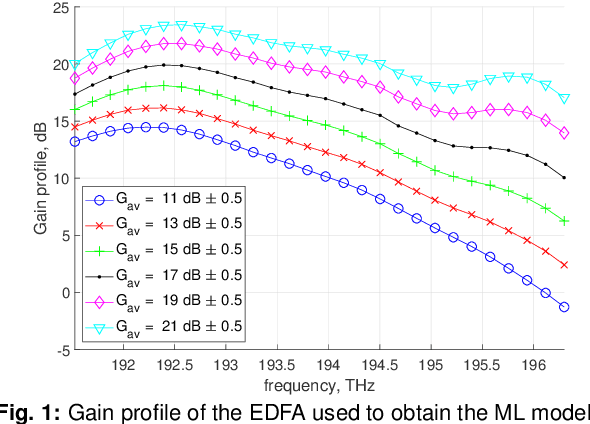
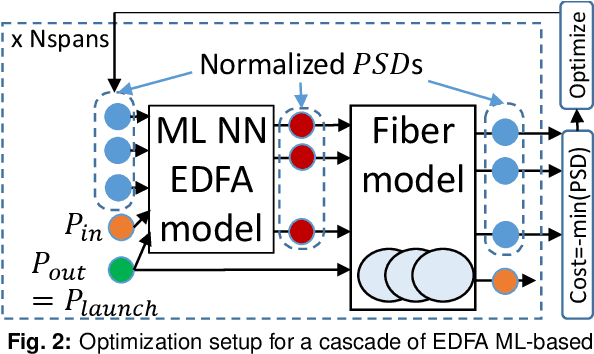

Abstract:Cascades of a machine learning-based EDFA gain model trained on a single physical device and a fully differentiable stimulated Raman scattering fiber model are used to predict and optimize the power profile at the output of an experimental multi-span fully-loaded C-band optical communication system.
Machine learning-based EDFA Gain Model Generalizable to Multiple Physical Devices
Sep 11, 2020


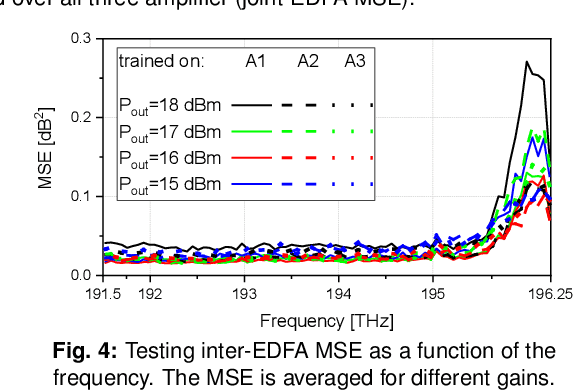
Abstract:We report a neural-network based erbium-doped fiber amplifier (EDFA) gain model built from experimental measurements. The model shows low gain-prediction error for both the same device used for training (MSE $\leq$ 0.04 dB$^2$) and different physical units of the same make (generalization MSE $\leq$ 0.06 dB$^2$).
End-to-end Learning for GMI Optimized Geometric Constellation Shape
Jul 19, 2019



Abstract:Autoencoder-based geometric shaping is proposed that includes optimizing bit mappings. Up to 0.2 bits/QAM symbol gain in GMI is achieved for a variety of data rates and in the presence of transceiver impairments. The gains can be harvested with standard binary FEC at no cost w.r.t. conventional BICM.
 Add to Chrome
Add to Chrome Add to Firefox
Add to Firefox Add to Edge
Add to Edge